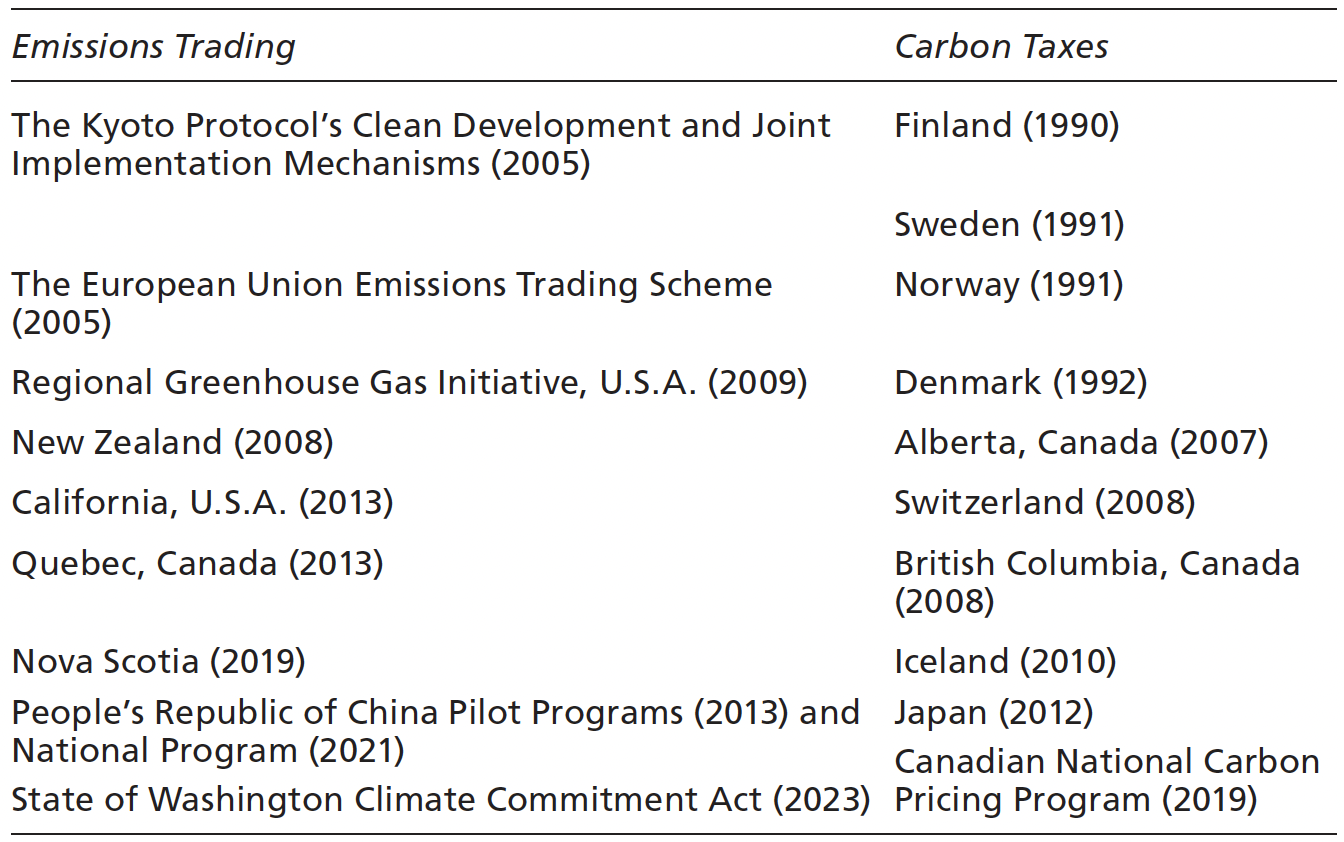Lecture 24
Climate Change II: Carbon Pricing
November 4, 2024
Happy Halloween, everyone! 🎃👻🎃👻🎃👻🎃👻🎃👻🎃👻


Climate Change II: Carbon Pricing
Introduction
Sources of Greenhouse Gas Emissions

Source: Total U.S. Greenhouse Gas Emissions by Economic Sector in 2022, EPA
The Need for Comprehensive Policies
- Carbon pricing offers a more comprehensive emission reduction strategy.
- Controls greenhouse gas (GHG) emissions beyond the energy sector.
- Benefits of carbon pricing:
- Fuel Switching: Encourages shift to lower-carbon fuels.
- Energy Efficiency: Increases cost savings per unit of emissions reduced.
- Non-Energy GHG Reduction: Targets emissions from various sources.
- Technological Innovation: Stimulates development of new fuels and emission-reducing technologies.
The Equimarginal Principle
- Definition:
- Achieve cost-effectiveness when the marginal cost (MC) of reducing the last ton of emissions is equal across all reduction opportunities.
- Explanation:
- Cost-effectiveness is achieved by allocating emission reductions where they are cheapest.
- No further cost savings can be made by reallocating efforts among sources.
The Equimarginal Principle
- Example:
- Both Company A and Company B have non-constant MC.
- If Company A can reduce emissions at $50/ton and Company B at $100/ton:
- Allocate more reduction to Company A until MCs equalize.
- Implication:
- Equalizing MCs across all emitters minimizes the total cost of achieving emission targets.
Cost-Effectiveness of Carbon Pricing
- Equimarginal Principle
- Achieve cost-effectiveness when the MC of reducing the last ton of emissions is equal across all reduction opportunities.
- Carbon pricing inherently promotes this by:
- Imposing a uniform price on CO2e emissions.
- Leading emitters to abate until their marginal cost equals the carbon price.
- Result:
- Equalized marginal costs among all emitters.
- Satisfaction of cost-effectiveness conditions.
Necessary Conditions for Cost-Effectiveness
- Comprehensive Coverage:
- Price applied to all GHGs (via CO2e), not just CO2.
- Inclusion of all emission sources.
- Uniform Pricing:
- All emitters face the same CO2e price.
- Prevents violation of equal-marginal cost condition.
- Current Challenges:
- Existing programs often exclude certain gases or sources.
- Different carbon pricing programs impose varying prices.
Forms of Carbon Pricing
- Two primary approaches:
- Carbon Taxes:
- Government sets the price.
- Market determines the resulting emissions level.
- Emissions Trading Programs (Cap-and-Trade/Cap-and-Invest):
- Government sets the allowed emissions level.
- Market determines the price to achieve that level.
- Carbon Taxes:
- Interchangeability:
- For any emissions level, there’s a corresponding price and vice versa.
Global Adoption of Carbon Pricing
- Early Negotiations:
- Europe favored carbon taxes.
- United States preferred cap-and-trade.
- Current Landscape (World Bank, 2021):
- 64 carbon pricing initiatives implemented or scheduled.
- Involves 45 national jurisdictions.
- Covers 21.5% of global GHG emissions.
- Breakdown:
- 74% of covered emissions from emissions trading programs.
- Remaining from carbon tax programs.
Global Adoption of Carbon Pricing

Selected Emissions Trading and Carbon Tax Programs